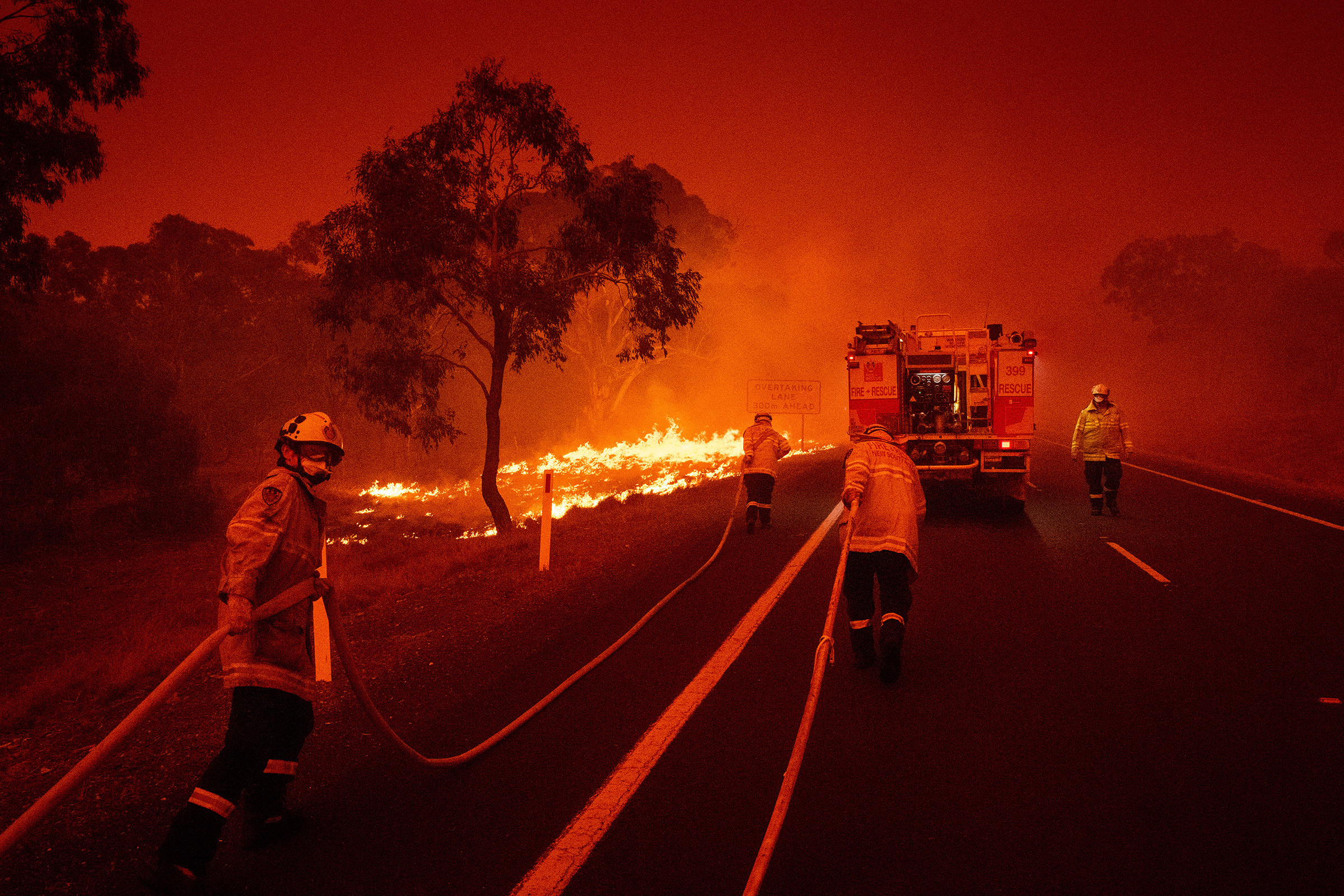In November 2019, Luke Summerscales and Jessica Jacobs were in a remote mountain range of New South Wales, fighting some of the worst bushfires on record in Australia, when another disaster struck: a fellow firefighter collapsed from a heart attack. The nearest ambulance was more than an hour away and the terrain was too steep for a rescue helicopter to land, so the pair started doing CPR on 53-year-old John Kennedy.
Fires burning around them, Summerscales and Jacobs struggled to get defibrillator pads to stick to Kennedy’s chest. They performed CPR for 45 minutes before Kennedy was able to breathe on his own.
“We lost him three times, but we got him back every time,” Jacobs says. “We’re so lucky to have been able to really make a difference.”
In November 2020, the Country Fire Authority, a fire-management organization, recognized their actions by giving them both Chief Officer Commendation awards. But Summerscales and Jacobs aren’t professional firefighters—they’re volunteers. Summerscales builds houses for a living; Jacobs works as a university lab technician. Starting in late 2019, as record fires raged across their nation during its summer season, they joined tens of thousands of Australians who set aside their usual lives to help stop the spread of the blazes.
As climate change heightens both the frequency and intensity of bushfires, firefighters are being tested to new extremes. Australia is unusually reliant on volunteer labor—in the state of New South Wales, which suffered some of the country’s most severe fires during the 2019–2020 bushfire season, close to 90% of the men and women fighting fires were volunteers. It’s been this way for more than a century in Australia, with ordinary citizens working together to protect the land. But last year especially, their service came with incredible sacrifice: they gave up the holidays with their families, took time off work, and lost income to fight infernos that burned for several months in 2019 and early 2020. Three volunteer firefighters lost their lives.
2019 was Australia’s hottest and driest on record, and the resulting fires all but exhausted the men and women constantly called to battle them. Peter Holding, 66, who has been a volunteer firefighter for 43 years, says he’s never seen anything as severe as last summer’s bushfire season—a devastating period now known as the Black Summer. “There’s going to have to be some very serious effort put into reducing emissions if we’re going to stop this from getting any worse,” he says.
Still, as Australia’s fire season intensifies in late 2020, its volunteer firefighters are preparing to do battle again. “It’s about the impact we have on the community and the people we help,” Summerscales says. “It’s that feeling that you made a difference.”
- The 100 Most Influential People of 2024
- The Revolution of Yulia Navalnaya
- 6 Compliments That Land Every Time
- What's the Deal With the Bitcoin Halving?
- If You're Dating Right Now, You're Brave: Column
- The AI That Could Heal a Divided Internet
- Fallout Is a Brilliant Model for the Future of Video Game Adaptations
- Want Weekly Recs on What to Watch, Read, and More? Sign Up for Worth Your Time
